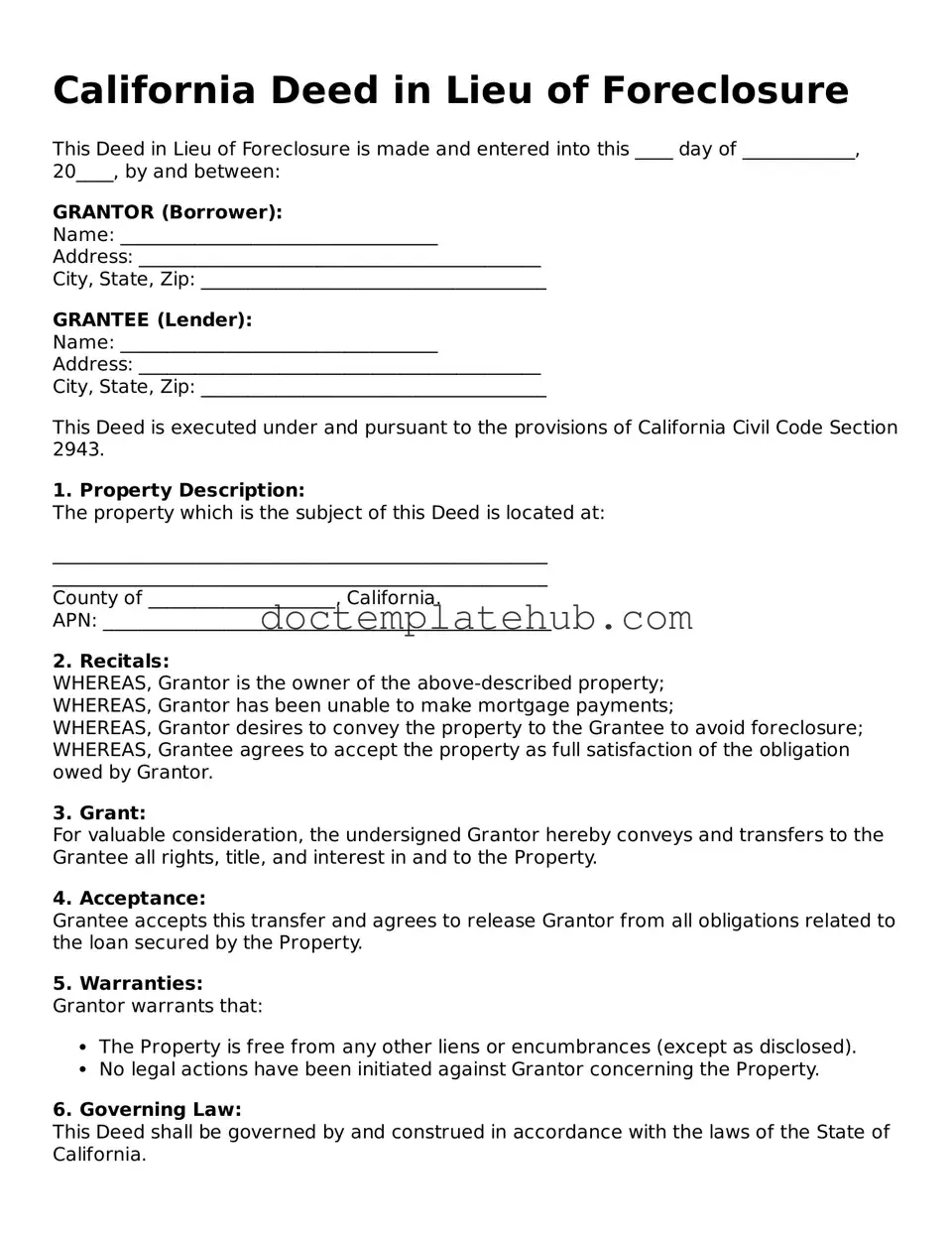What is a Deed in Lieu of Foreclosure?
A Deed in Lieu of Foreclosure is a legal agreement where a homeowner voluntarily transfers the title of their property to the lender to avoid foreclosure. This option allows the homeowner to walk away from the mortgage without the lengthy and often stressful foreclosure process. It can also help protect the homeowner's credit score compared to a foreclosure. However, the lender must agree to this arrangement, as they are not obligated to accept it.
What are the benefits of a Deed in Lieu of Foreclosure?
There are several benefits to consider. First, it can save time and money. The foreclosure process can be lengthy and costly for both parties. By opting for a Deed in Lieu, the homeowner can expedite the process. Second, it may have a less severe impact on the homeowner's credit score compared to a foreclosure. Lastly, it can provide the homeowner with a fresh start, as they can avoid the stigma associated with foreclosure.
What are the requirements to qualify for a Deed in Lieu of Foreclosure?
To qualify, the homeowner must typically be experiencing financial hardship. This could include job loss, medical expenses, or other significant financial challenges. Additionally, the homeowner must be current on their mortgage payments or at least not significantly behind. The lender will also require a thorough review of the homeowner's financial situation and may request documentation to support the claim of hardship.
How does the process work?
The process begins with the homeowner contacting their lender to express interest in a Deed in Lieu of Foreclosure. The lender will then review the homeowner’s financial situation and property details. If approved, both parties will sign the necessary paperwork to transfer ownership of the property. The lender may also require the homeowner to vacate the property by a certain date. It’s important to ensure that all terms are clearly understood before signing any documents.
Will I still owe money after a Deed in Lieu of Foreclosure?
In some cases, the homeowner may still owe money after the deed is transferred. This is known as a deficiency. Whether a deficiency exists depends on the terms of the mortgage and state laws. California has specific laws regarding deficiencies, and in many cases, lenders cannot pursue the homeowner for the remaining balance if the property was their primary residence. However, it’s crucial to discuss this with the lender to understand potential liabilities fully.
Can I negotiate the terms of a Deed in Lieu of Foreclosure?
Yes, homeowners can negotiate the terms. This may include asking for a waiver of any deficiency or discussing the timeline for vacating the property. It's advisable to approach negotiations with a clear understanding of your needs and to communicate openly with the lender. Having legal representation can also help ensure that your interests are protected during this process.
